By: Thorsten Overgaard. July 24, 2014. Edited August 24, 2022.
Add to Flipboard Magazine.
Photographing in Bangladesh with the Leica M240
What's not to love about my job? I went to Bangladesh to shoot a series of pictures for an 8-page article in a magazine. I'd never been to Bangladesh before, so that was exciting.
I flew 14 hours from Germany to Bangladesh and then had a 250 miles drive (which was 10 hours with a short lunch break) so as to arrive to shoot for eight hours. Then return the same track back to Denmark, and then to the US.

The road outside out hotel early morning. Dhaka, Bangladesh. Leica M 240 with Leica 50mm Noctilux-M ASPH f/0.95. © Thorsten Overgaard.
When you "travel enough", you stop having considerations about what is a long trip, or if it's worth it. I decide to go get a picture, and I go to the airport, get on the plane and sleep as much as I can. I really don't consider if it's far or long away, or if it's worth it. I mention this because the editor of the magazine love this attitude, and he's like that himself. You don't think about it till you meet other people who think one trip a year is enought, or they've rather stay home.
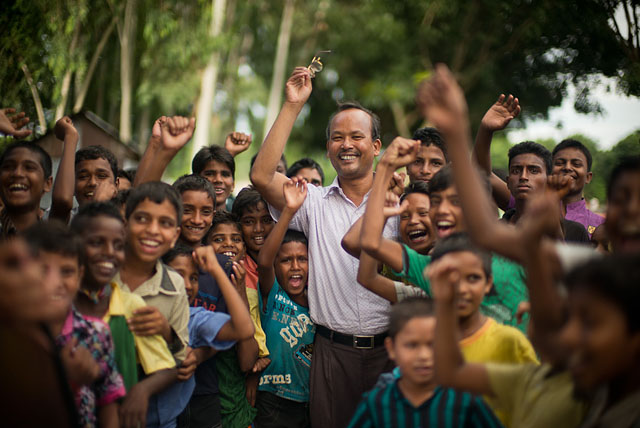
The local school headmaster in the destination city, Dinajpur, Mr. Bishwanath Roy, was and is the reason I had to go to Bangladesh. He's been doing some noteable actions building a school and community. Enough to fill eight pages in an international magazine. © Thorsten Overgaard. Leica M 240 with Leica 50mm Noctilux-M ASPH f/0.95.
Arriving in Bangladesh
I had a guide meet me inside the airport to get me through the visa-on-arrival, which was much easier and much more friendly than expected, and then I had two more helpers outside the airport to get me onto a 10 hour drive through Dhaka and beyond.
Beore heading onto the 10 hour drive, I crashed over night in a cosy hotel next to the airport. Next morning I was out when the sun came up at 5:30 AM and shot some atmosphere of the city. When time is limited, you got to grab the moments you have.
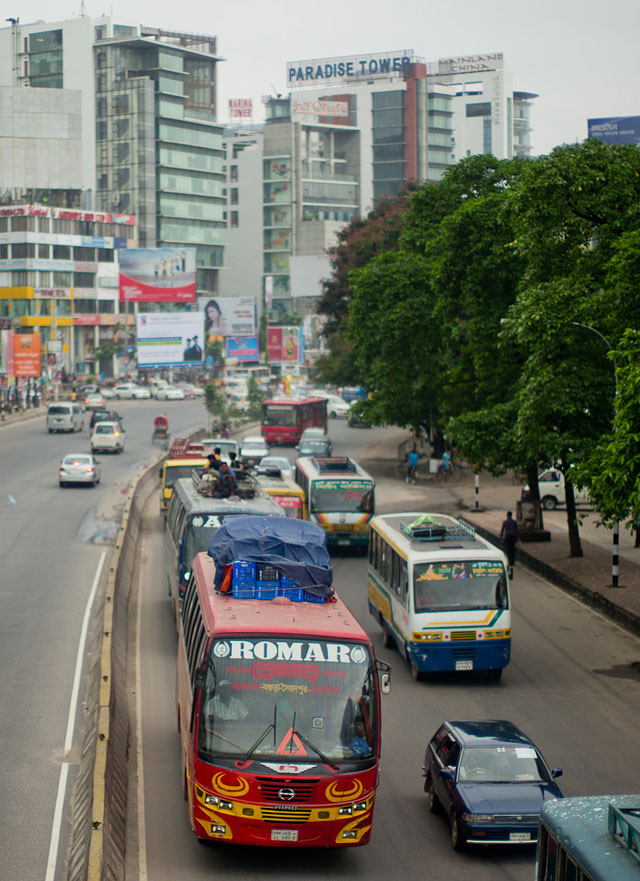
Dhaka, Bangladesh. Leica M 240 with Leica 50mm Noctilux-M ASPH f/0.95. © Thorsten Overgaard.
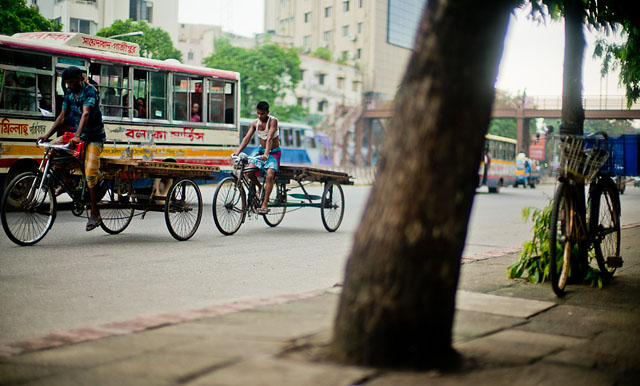
Dhaka, Bangladesh. Leica M 240 with Leica 50mm Noctilux-M ASPH f/0.95. © Thorsten Overgaard.
"Rural country" - what does it mean?
I think Bangladesh is best described if I say it is as friendly as Sri Lanka, rural and dusty as Nepal, and as packed with people as India. Which makes some sense as Bangladesh used to be part of India. They separated years ago, and in 1946 they gained independance from the Empire (UK), and again from East Pakistan in 1971. India is 90% Hindu, 10% Muslim, Bangladesh is the oppisite. The people we worked with were mostly Hindu.

10 hours roadtrip into a more and more empty landscape. But there is always people around. © Thorsten Overgaard. Leica M 240 with Leica 21mm Summilux-M ASPH f/1.4.
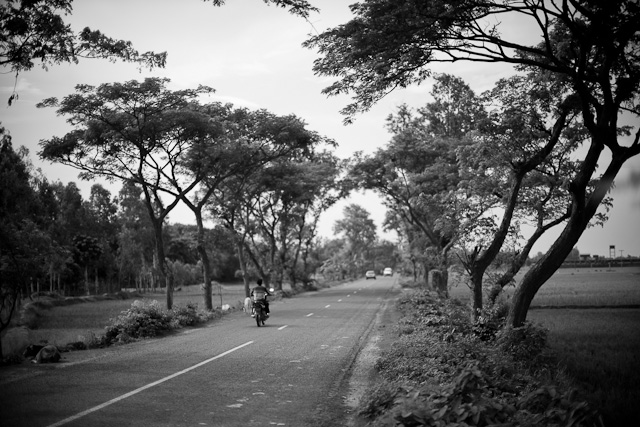
Leica M 240 with Leica 50mm Noctilux-M ASPH f/0.95. © Thorsten Overgaard.
When I googled images from Bangladesh, before the trip, the majority of the first images I first saw were people beaing beaten with sticks!
It is always like that: What people say and especially what the news reports say, is never the reality of how the life and street and the people look.
Bangladesh turned out to be very friendly, and on the drive I saw the rice fields and the green, sparkling countryside with paper-thin cows and frolocking goats here and there on the fields or by the roadside.
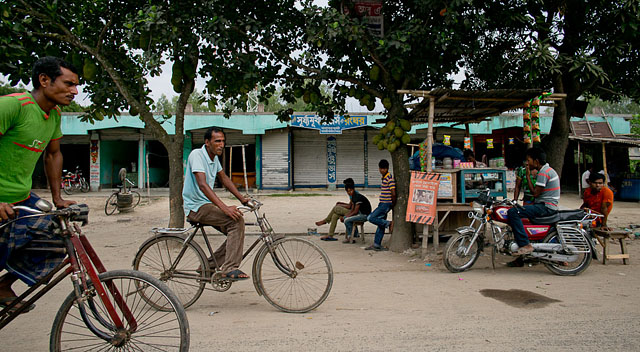
Dhaka, Bangladesh. © Thorsten Overgaard. Leica M 240 with Leica 21mm Summilux-M ASPH f/1.4.

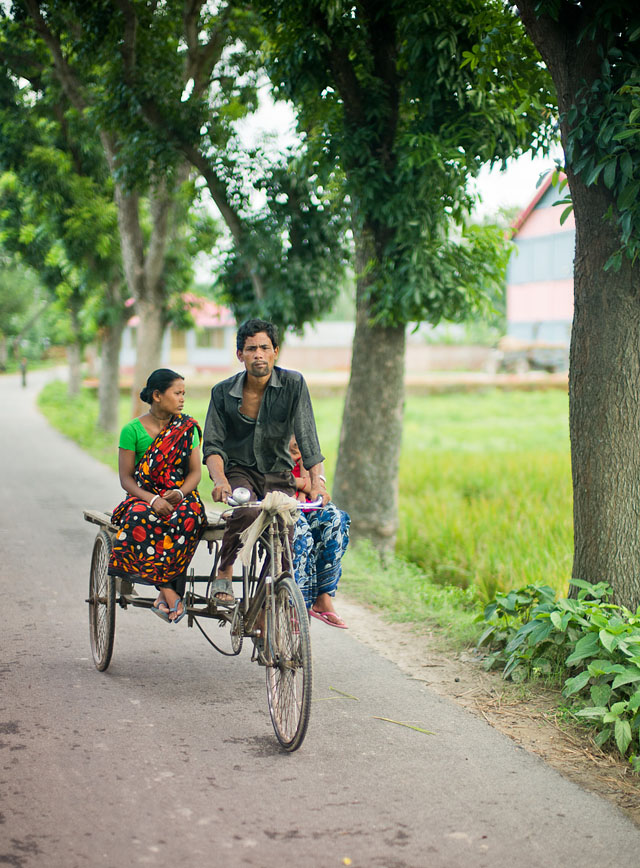
Everyone seem to use the ricksaws for transportation. I saw many women, workers and others who hired a ricksaw to get around. I would normally associate it with something for well off people or tourists. But I was wrong on that. Bangladesh. © Thorsten Overgaard. Leica M 240 with Leica 50mm Noctilux-M ASPH f/0.95.
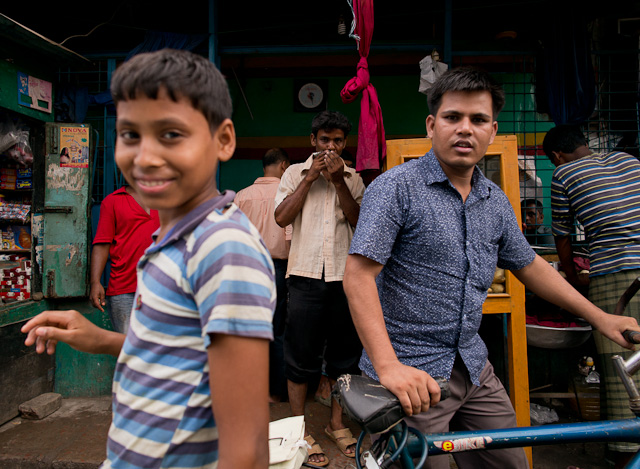
Some of the local faces that looked into the car as we drowe by. Leica M 240 with Leica 21mm Summilux-M ASPH f/1.4.
| |
|
|
|
 |
| |
Buy the Best-Selling eBook by Thorsten Overgaard:
"Finding the Magic of Light"
"I have just been reading your eBook last night, which opened my eyes for more than
I have been thinking about before. You have a great sensitivity that I feel
connected with, and I enjoyed every word."
"I am reading your book, Finding the Magic of Light. Exactly what I crave."
"I find your books very helpful and thought-provoking."
"A must have. Personally useful for street photography."
|
 |
|
|
|
| |

Also available in German:
"Die Magie des Lichts Finden"
 DE DE |
|
In this easy to read and apply eBook, Thorsten Overgaard takes you on a journey to see, understand and simply use light.
"One of the most important ways to get an aesthetic and pleasant picture is to find the good light."
"Finding the Magic of Light"
New 2nd edition (April 2015)
eBook for computer and iPad.
(87 pages)
Only $47


Order now - Instant delivery.
(Note: If you bought the first edition of this book, this new edition is free. Simply send an e-mail for your free update).
★
★
★
★
★
★
|
| |
|
|
|
The driver would stop and ask for directions direction, and the folks would stare so hard at me in the back they didn't notice the driver talking to them. Then the driver yelled higher, and they were sort of taken out of their intense stare and realized the window was open to the driver and he was talking to them. Bangladesh felt more familiar to me than I did to them, obviously.
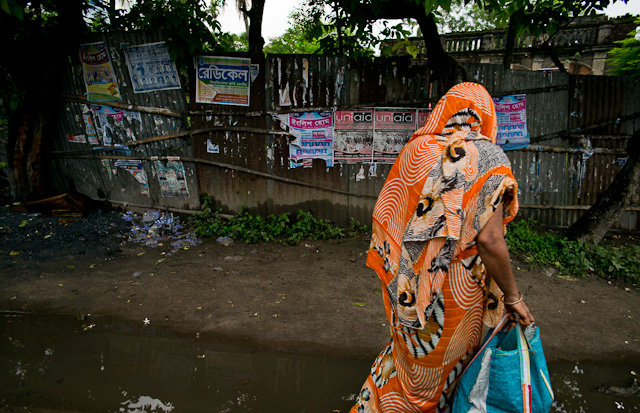
Leica M 240 with Leica 21mm Summilux-M ASPH f/1.4.
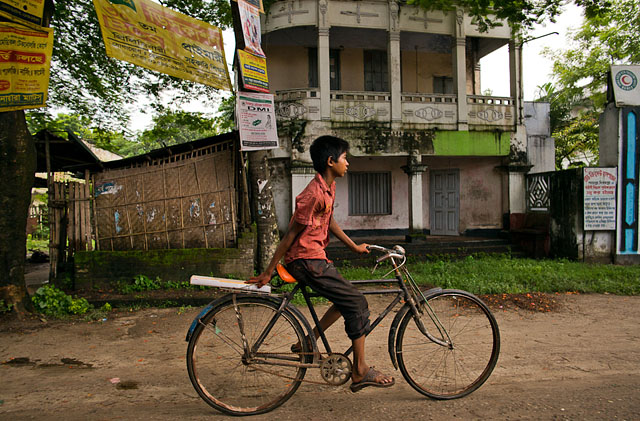
Leica M 240 with Leica 21mm Summilux-M ASPH f/1.4.
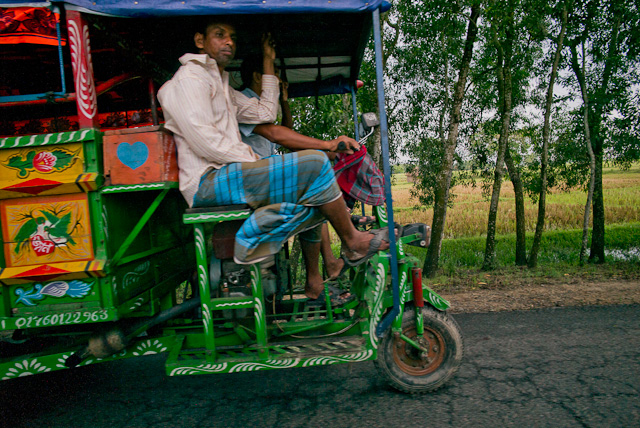
Leica M 240 with Leica 21mm Summilux-M ASPH f/1.4.
When researching Bangladesh, I wanted to rent a car. They are all rented with a driver, even Hertz cars, and now I know why: The traffic is both reckless and funny enough, wreckless. Left-side driving as you would expect if in any country "civilized" by the British Empire, but they drive all over the road: You drive in the left side, but then you take over the middle and right side when there is space. At times there would be three lanes going left on a two-way road.
And then when a car or tuk-tuk comes the other way, they make space for that one. So a two-lane road is made into a three-land and sometimes a four-lane road. If you saw the road from above, it would be packed with traffic. And the honking is out of control! But the drivers manage to go in and out so they don't collide, even they all use all the road!
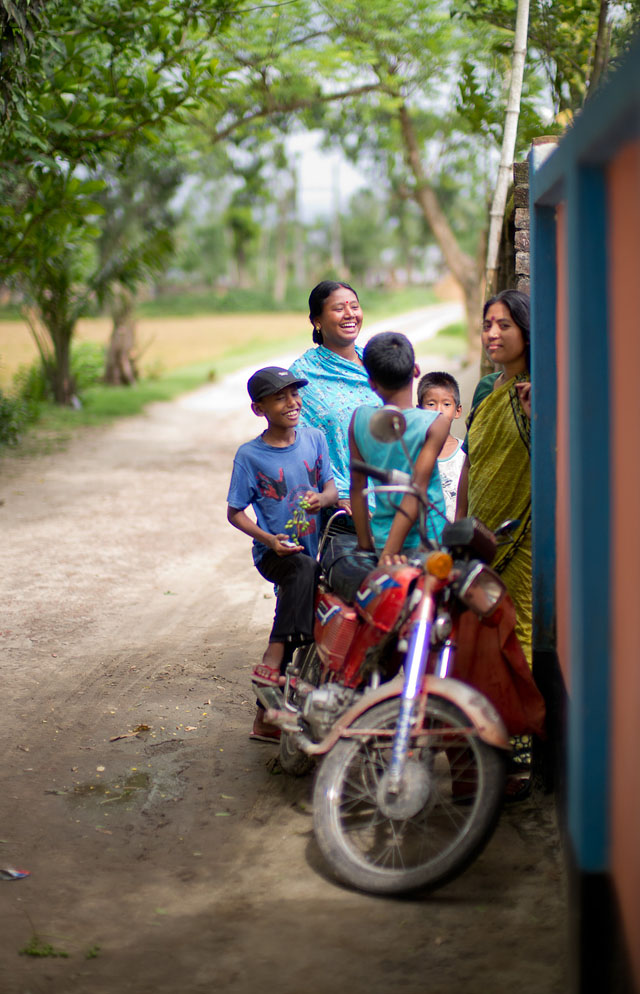
Dinajpur, Bangladesh. © 2014 Thorsten Overgaard. Leica M 240 with Leica 50mm Noctilux-M ASPH f/0.95.
| |
|
|
|
|
| |
Buy the new eBook
"A Little Book on Photography"
by Thorsten von Overgaard |
|
| |
|
|
|
|
| |

Order now - Instant delivery.
More info
★
★
★
★
★
★ |
|
It's a humorous understatement to call this
new eBook by Thorsten Overgaard for
"A Little Book on Photography".
It's a grand book, a history lesson, life experience, a biography and poetry book and brilliant photo book!
All in one beautiful package of 180 pages
to fire you up and get you to love
photography ... unconditionally!
"A Little Book on Photography"
eBook for computer, Kindle and iPad.
New release March 2017.
Intro price only $47 - 180 pages.
| |
|
|
| |
Buy Now

Instant Delivery |
|
| |
|
|

|
|
| |
|
|
This is also very much how people walk in India and Bangladesh: If there is an empty space, somebody will occupy that space. And this is one of the things that is hard to deal with as an European or Dane; getting into a metro for example, you wait behind someone, leaving some space so they can move around. In India, if you do the same, someone will take the empty space in front of you ... because it's a space!
I get a lot of stares. I read somewhere that Bangladesh only has 4,000 tourists a year. So of course when they see some foreigner, they notice.
Well, they stare! Someone will stand on the other side of the street and just stares with open mouth. It's a different selfawareness than I am used to, I recognize it from parts of India.
Or, as in the airport, three security people came over to me and started staring! You would expect them to arrest me or ask me to stop smoking. But no, they stare and do nothing.
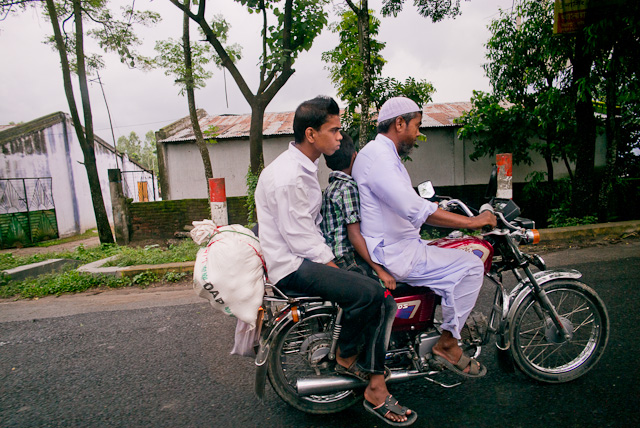
Dinajpur, Bangladesh. © Thorsten Overgaard. Leica M 240 with Leica 21mm Summilux-M ASPH f/1.4.
Now, I have seen that stare a lot around the world. So I finally got an explanation.
Those people don't speak English, so they have no means of contacting me. But they want to "be part of it" and are really interested what is going on. So they stare, and often they will get closer so they can get a better stare.
It's just one of those things, like the Indian nod with the head that you think means "Yes" but means "I hear you" (which is why someone will nod with their head and then not do as you thought you had agreed).
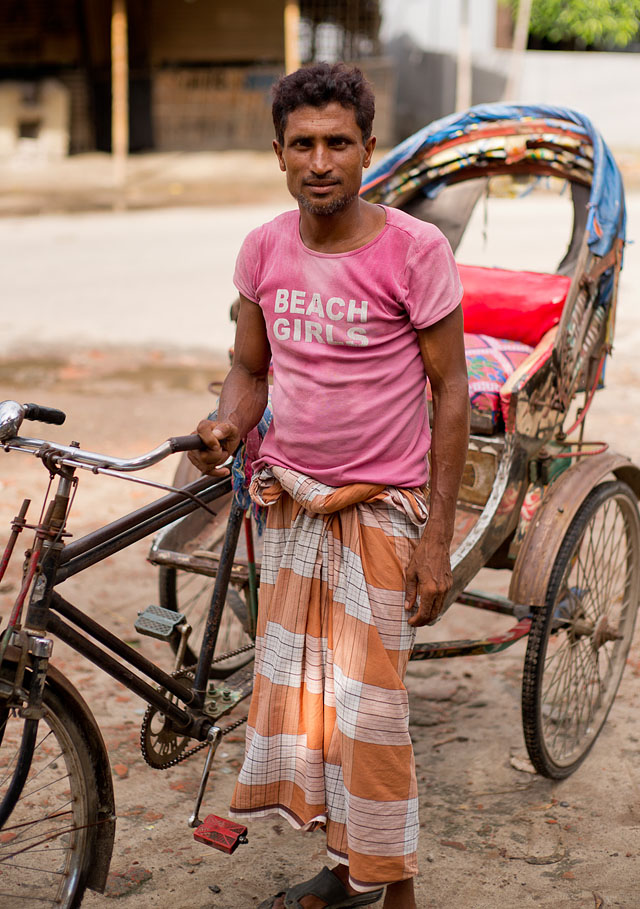
When scouting for a location for a portrait, this fellow stopped up and simply looked at me. I noticed his t-shirt, so I returned his interest with a picture of him. "Beach Girls". Dinajpur, Bangladesh. © 2014 Thorsten Overgaard. Leica M 240 with Leica 50mm Noctilux-M ASPH f/0.95.
An informal conversation
Early 7 AM in the morning outside the hotel in the capitol I was out taking some atmosphere photos that I also needed for the story. A guy walks close to me and stares. So I look at him and say "Hi ... Do you speak English" and he points his finger in the air, circles it, and says "Bangladesh!", then smiles and leaves.
Cute in a way. We didn't have a talk, but we did meet and have a talk. And that's all there is to it.
The people who speak English will usually also ask a lot of questions and tell a lot about themselves. That's another story. As a photorapher you prefer the silent stares. It's easier to get work done when you don't have to listen and answer.
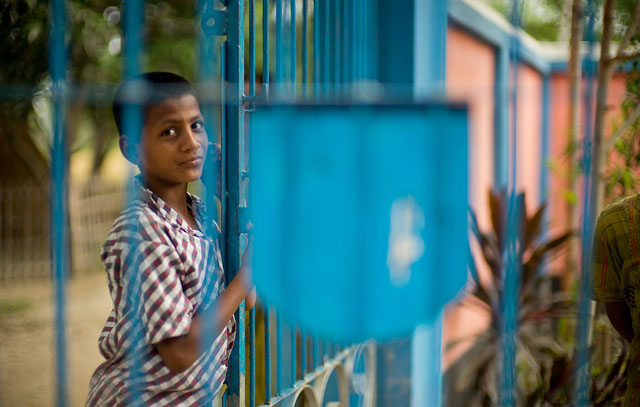
The neighbour boy having a look, Dinajpur, Bangladesh. ©Thorsten Overgaard. Leica M 240 with Leica 50mm Noctilux-M ASPH f/0.95.

Dhaka, Bangladesh. © Thorsten Overgaard. Leica M 240 with Leica 50mm Noctilux-M ASPH f/0.95.
The amount of people and their unhidden interest is a challenge doing photographs. I tried it some years ago in India where we were doing both stills and video. We had to go to a rooftop to shoot video, and even then we had 50 people following us to see what we were up to (which was better than the 1,000 we had on the ground).
In Bangladesh the attitude is the same. We start lining up for a portrait, in the street or inside a compound. In a matter of minutes there is a crowd. In front of the camrea, behind the subject. For some reason people generally think the best view of what is going on is if they go in front of the camera and look into the lens, like if it was a television screen.
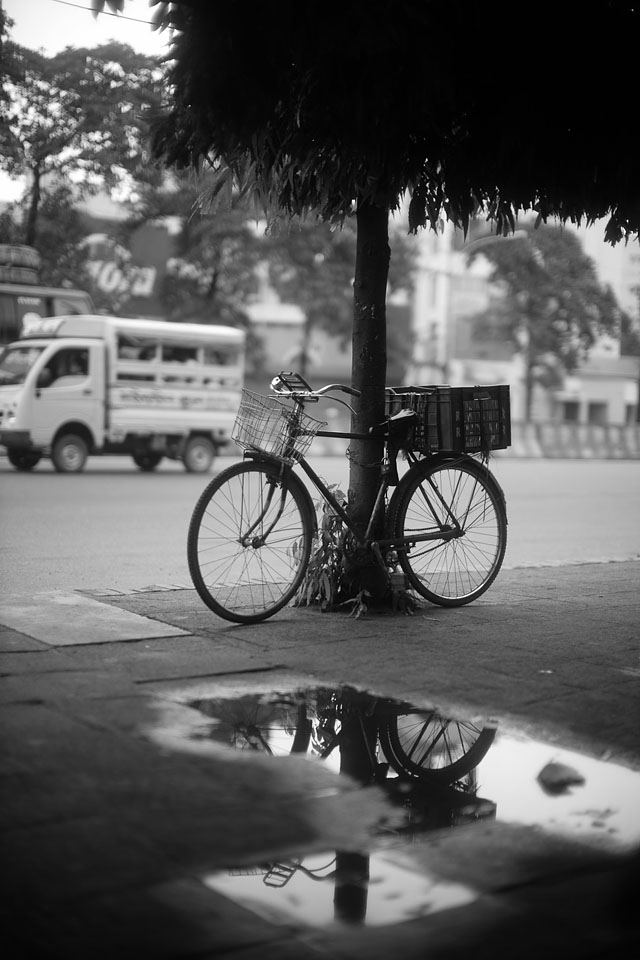
Dhaka, Bangladesh. © 2014 Thorsten Overgaard. Leica M 240 with Leica 50mm Noctilux-M ASPH f/0.95.
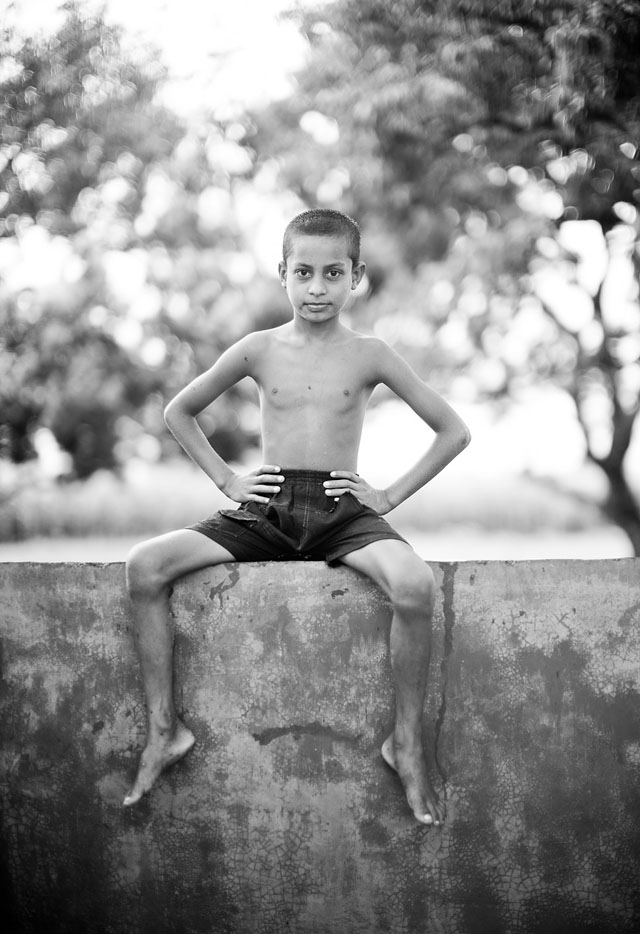
A neighbour boy poses in a resort outside the town of Dinajpur, Bangladesh. © Thorsten Overgaard. Leica M 240 with Leica 50mm Noctilux-M ASPH f/0.95.
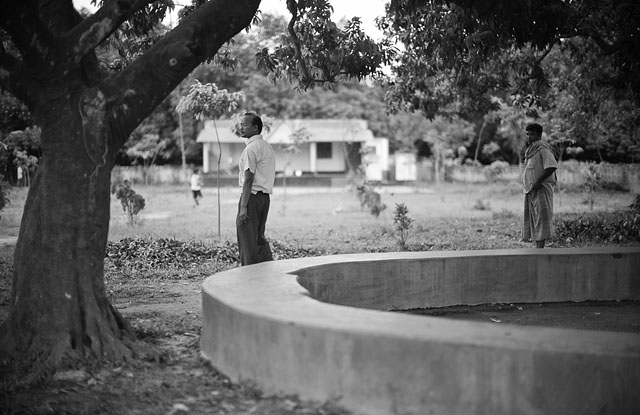
A small quiet place in Dinajpur, Bangladesh. We had a break and some fresh fruit. © Thorsten Overgaard. Leica M 240 with Leica 50mm Noctilux-M ASPH f/0.95.
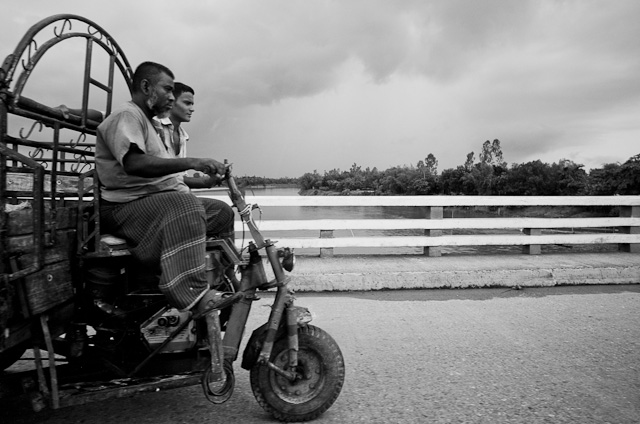
Bangladesh. Leica M 240 with Leica 21mm Summilux-M ASPH f/1.4. © Thorsten Overgaard.
Leica M240: What to shoot in Bangladesh
When I arrive I have a shot list, and in this case it was very tight timewise. I had specific persons I had to get a photo of, as well as reportage photos that was important for the story.
When you get there some things look different than you expected. Some people are not there as planned. For example the actual shooting day was a national holiday ... which we realized in the morning. So some photos of a crowd, that would have been easy any day was not possible.
You have the story in mind, and then you improvise. The people that might be missing, you find new ones to replace them. The only thing you can't do is come home with only 70% of what the magazine sent you to do.
I find that every moment counts. When I am ahead of the time schedule, I don't slow down. And when I see something that is a great photo, I shoot it. I know that general atmosphere photos will be needed to establish an overview of the country or the scene. So I look for them, all the time. Especailly I like if I can get photos that may change a wrong concept of a country or people.
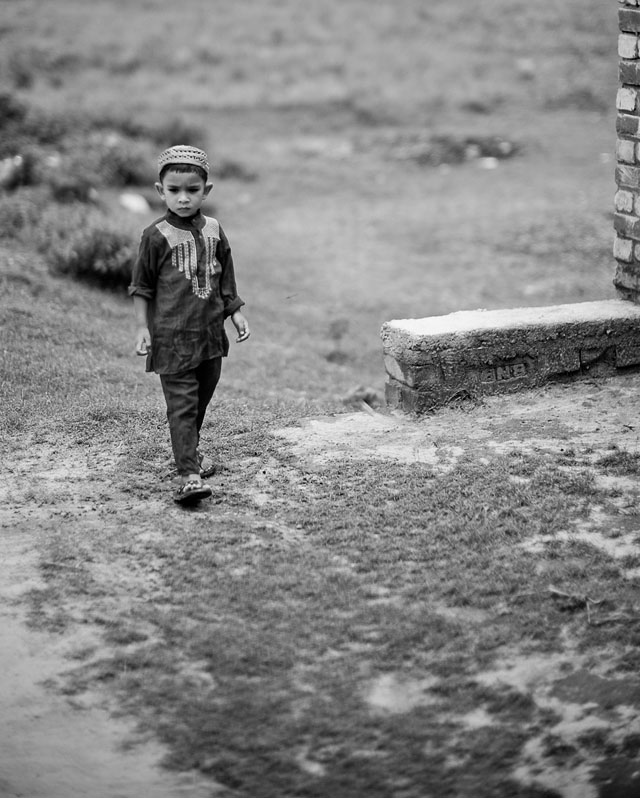
Dinajpur, Bangladesh. Leica M 240 with Leica 50mm Noctilux-M ASPH f/0.95. © Thorsten Overgaard.
But one important thing that one easy forget is that you know how it looks because you see it. Many obvious photos you wouldn't take because you have the misconception that everybody knows (now that you do). But you have to take them, because remember that other people don't know how the place looks like. You can tell them , but why not just lift the camera and make sure to get some "normal scenes" of street life.
Other people can't know that they have many bicycles. Or that the houses are built of stone and in bright colors. It's important to take photos of even the obvious, the "this is how Dinajpur looks" photos.
Also to be realistic. For example we stopped midway in a rather lofty lunch restaurant by the road. It was hot and I just woke up. I open the door, and there is a guy in uniform saluting me! What the heck, are we under arrest or what? It turns out the parking guard there salutes the guests. So did the young kid who cleaned the toilets.
That's a thing worth taking pictures of, but sometimes you just have to give it a rest and realize you can't photograph everything, all the time.
Focus on the story and have an idea what might be valuable to have. I also have the rule that when I photograph for 8 hours, I will ned another 8 hours to edit and finalize the photos. That alone give you an idea that you have to economize with the shots. You don't photoraph for your mother or Facebook, you photograph for a story in a magazine.
If you photograph all the time you will get nothing finished. If you photograph half the time you will produce a lot!
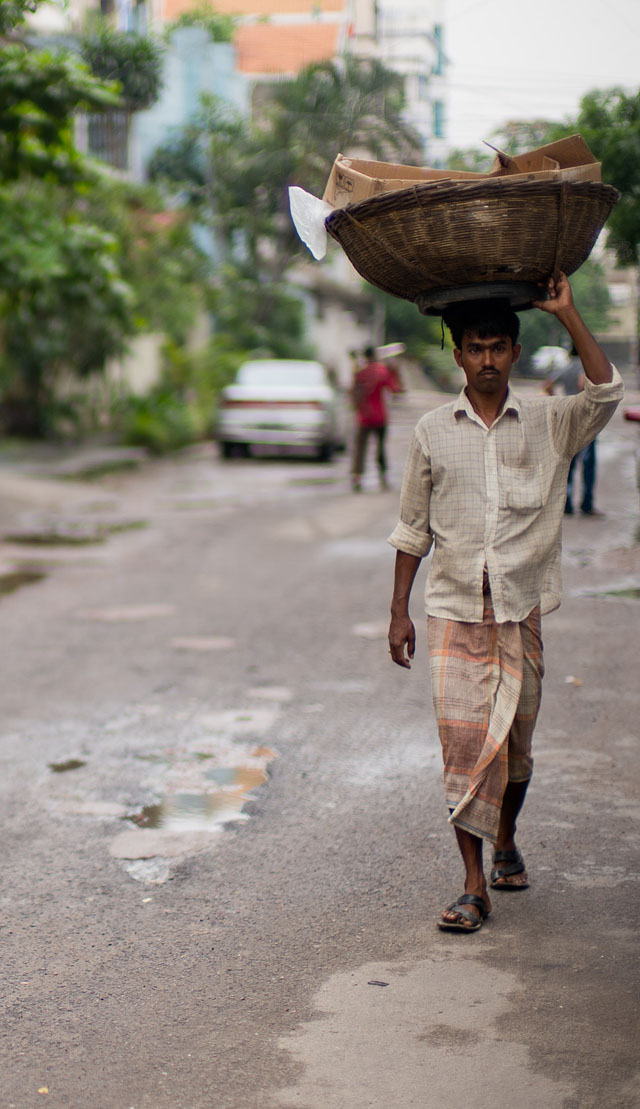
Dhaka, Bangladesh. Leica M 240 with Leica 50mm Noctilux-M ASPH f/0.95. © Thorsten Overgaard.
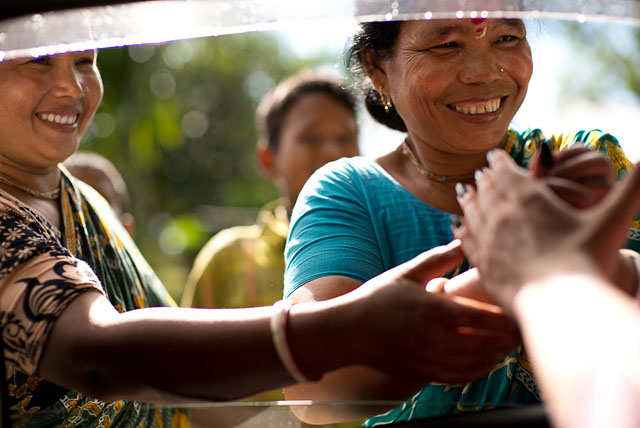
The final goodbye when we left in the car. New friends forever... Dinajpur, Bangladesh. © Thorsten Overgaard. Leica M 240 with Leica 50mm Noctilux-M ASPH f/0.95.
![]()
